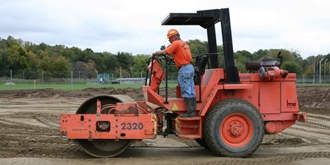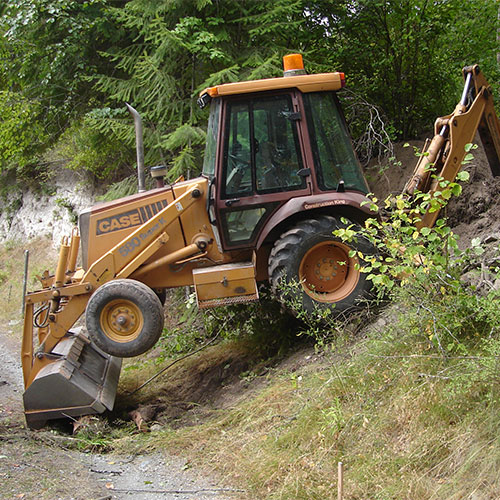Dump Truck Companies in Ohio - Trustworthy Dump Truck Services Throughout Ohio
Dump Truck Companies in Ohio - Trustworthy Dump Truck Services Throughout Ohio
Blog Article
Extensive Expedition: The Scientific Research Behind Superior Excavation Practices
The world of excavation practices is a domain name where science intertwines with workmanship to uncover the mysteries hidden beneath the earth's surface. From old hand tools to modern-day hydraulic excavators, the evolution of excavation techniques has been a testimony to human ingenuity and technological innovations. What absolutely establishes superior excavation practices apart is a deep understanding of geological principles, paired with the application of cutting-edge devices and techniques. By exploring the scientific research behind these methods, we can reveal the keys that lie underneath our feet and value the accuracy and proficiency that enter into every dig.
Evolution of Excavation Techniques
Throughout background, the advancement of excavation strategies has played a crucial duty in advancing building and construction practices and archaeological explorations. From the primary devices made use of by our forefathers to the advanced machinery employed in contemporary times, the development of excavation methods has actually dramatically transformed exactly how we approach various tasks.
In ancient times, manual work with standard tools such as pickaxes, shovels, and wheelbarrows was the primary approach of excavation. This labor-intensive process limited the depth and scope of excavations, frequently leading to slow progress and limited accessibility to particular sites. As worlds progressed, so did the tools and methods used for excavation.
The Industrial Change noted a transforming point in excavation experiment the introduction of steam-powered machinery. This advancement transformed the area, enabling for faster and extra substantial excavations. In contemporary times, modern technology plays a crucial function in excavation, with improvements like general practitioner systems, drones, and 3D scanning enhancing precision and efficiency in the area. The advancement of excavation strategies remains to form the means we construct, check out, and recognize the world around us.
Role of Modern Technology in Excavation

The combination of sophisticated technology has basically revolutionized the area of excavation, improving accuracy and efficiency to unprecedented levels. Among the key technical advancements that has significantly impacted excavation methods is the utilization of GPS systems. These systems permit exact mapping of excavation websites, allowing drivers to accurately situate underground utilities and frameworks. Additionally, the use of telematics in excavation devices has enabled real-time monitoring of device performance, leading to proactive maintenance and boosted operational efficiency.
Furthermore, the arrival of 3D modeling and simulation software application has structured the planning procedure for excavation projects. Designers and operators can now imagine the entire excavation procedure prior to damaging ground, determining prospective difficulties and optimizing operations. Along with this, the implementation of drones in excavation activities has actually assisted in aerial surveys, volumetric measurements, and website evaluations with unmatched speed and great site precision.
Geological Principles in Excavation
An understanding of geological principles is important for making certain the structural honesty and stability of excavation sites. Geological elements play a vital function in determining the usefulness and safety of excavation projects (lancaster excavation). One key geological principle to think about is the type of soil or rock present at the site. Different dirt kinds, such as clay, gravel, or sand, have varying levels of stability and require different excavation methods. Cohesive dirts like clay may call for extra support to prevent collapses, while sandy dirts might be vulnerable to erosion during excavation.
In addition, the geological framework of the area, including faults, cracks, and rock formations, must be meticulously analyzed to determine possible dangers and challenges. Digging deep into near mistake lines or unsteady rock developments explanation can result in instability and possible threats. By performing thorough geological surveys and evaluation, engineers and excavators can create methods to reduce dangers and guarantee the successful completion of excavation jobs. Eventually, integrating geological concepts right into excavation practices is vital for accomplishing risk-free, effective, and sustainable outcomes.

Most Recent Devices for Excavation
In the world of excavation techniques, modern advancements in devices have actually revolutionized the efficiency and accuracy of excavation procedures. These drones can supply detailed airborne surveys of excavation sites, providing real-time data on topography and potential threats.
Another cutting-edge device acquiring appeal is the implementation of 3D printing innovation for producing customized excavation tools. This permits the production of specialized devices that are tailored to the specific demands of a project, raising effectiveness and reducing downtime.
Moreover, innovations in materials why not find out more science have caused the growth of more powerful and a lot more resilient excavation devices. excavating ohio. Tungsten carbide-tipped excavator accessories, for instance, offer premium performance in difficult ground problems, boosting productivity on-site
Scientific research's Impact on Excavation Practices
Additionally, clinical research study on dirt technicians and geotechnical design has offered valuable insights into soil behavior, permitting excavation professionals to make informed decisions regarding excavation techniques and soil stabilization techniques. Generally, science continues to drive development and enhancement in excavation methods, making excavation tasks a lot more reliable, cost-efficient, and lasting.

Final Thought
Finally, the evolution of excavation methods has actually been substantially influenced by advancements in innovation and a much deeper understanding of geological principles. The most current tools and tools made use of in excavation have actually boosted effectiveness and precision in the field. The application of scientific understanding has actually significantly boosted excavation practices, causing extra lasting and effective approaches for digging deep into different kinds of materials.
In the world of excavation practices, contemporary developments in tools have reinvented the performance and precision of excavation procedures. By leveraging scientific principles, the excavation sector has actually been able to dramatically boost efficiency, accuracy, and security in excavation processes. GPR enables excavation groups to non-invasively scan and map subsurface frameworks, energies, and possible risks, allowing them to prepare excavation jobs with better accuracy and minimized danger of crashes.
In addition, scientific research on dirt auto mechanics and geotechnical design has actually offered important understandings right into soil actions, enabling excavation professionals to make informed decisions regarding excavation approaches and soil stabilization strategies. On the whole, scientific research continues to drive advancement and renovation in excavation techniques, making excavation projects much more effective, affordable, and sustainable.
Report this page